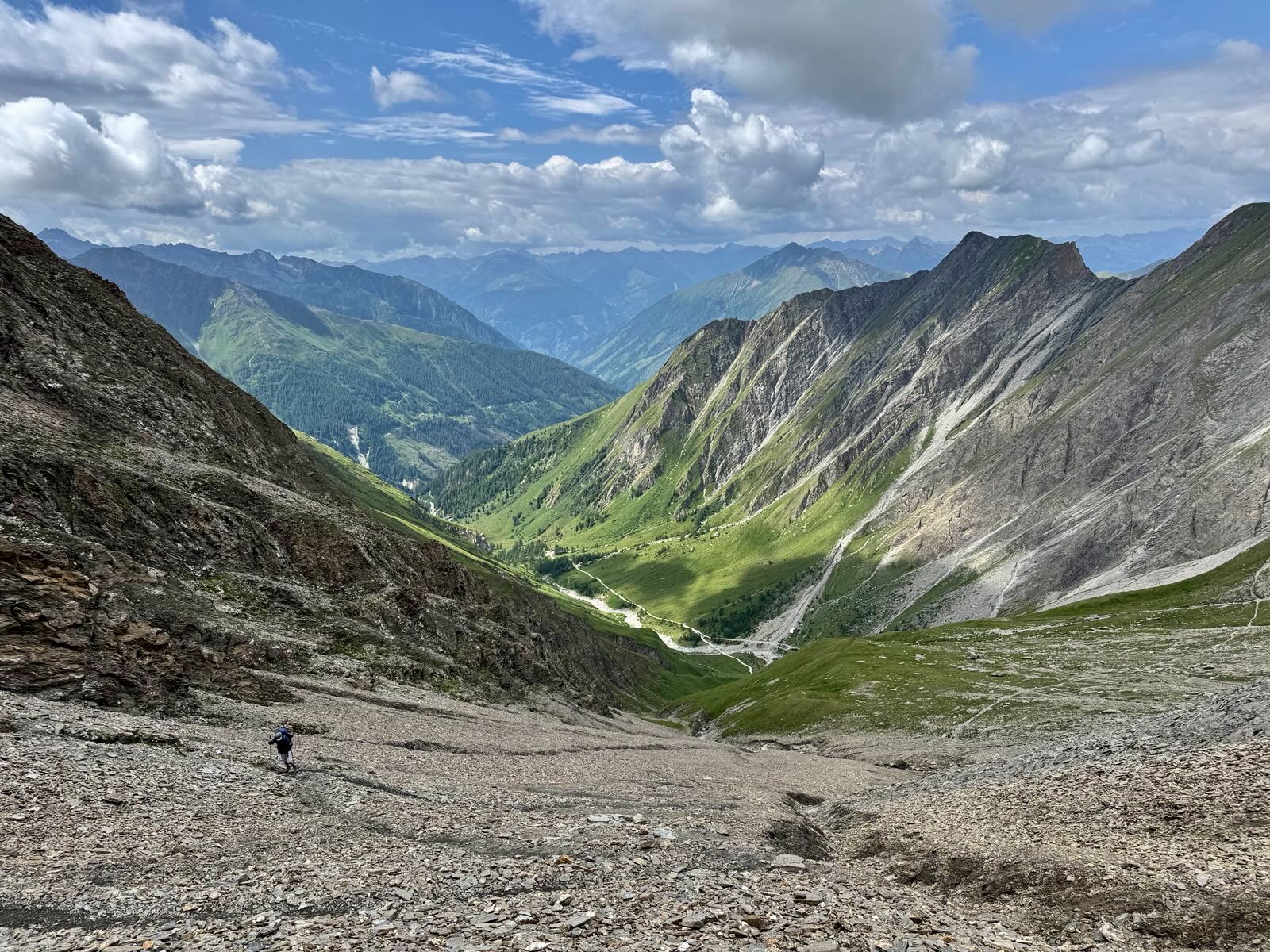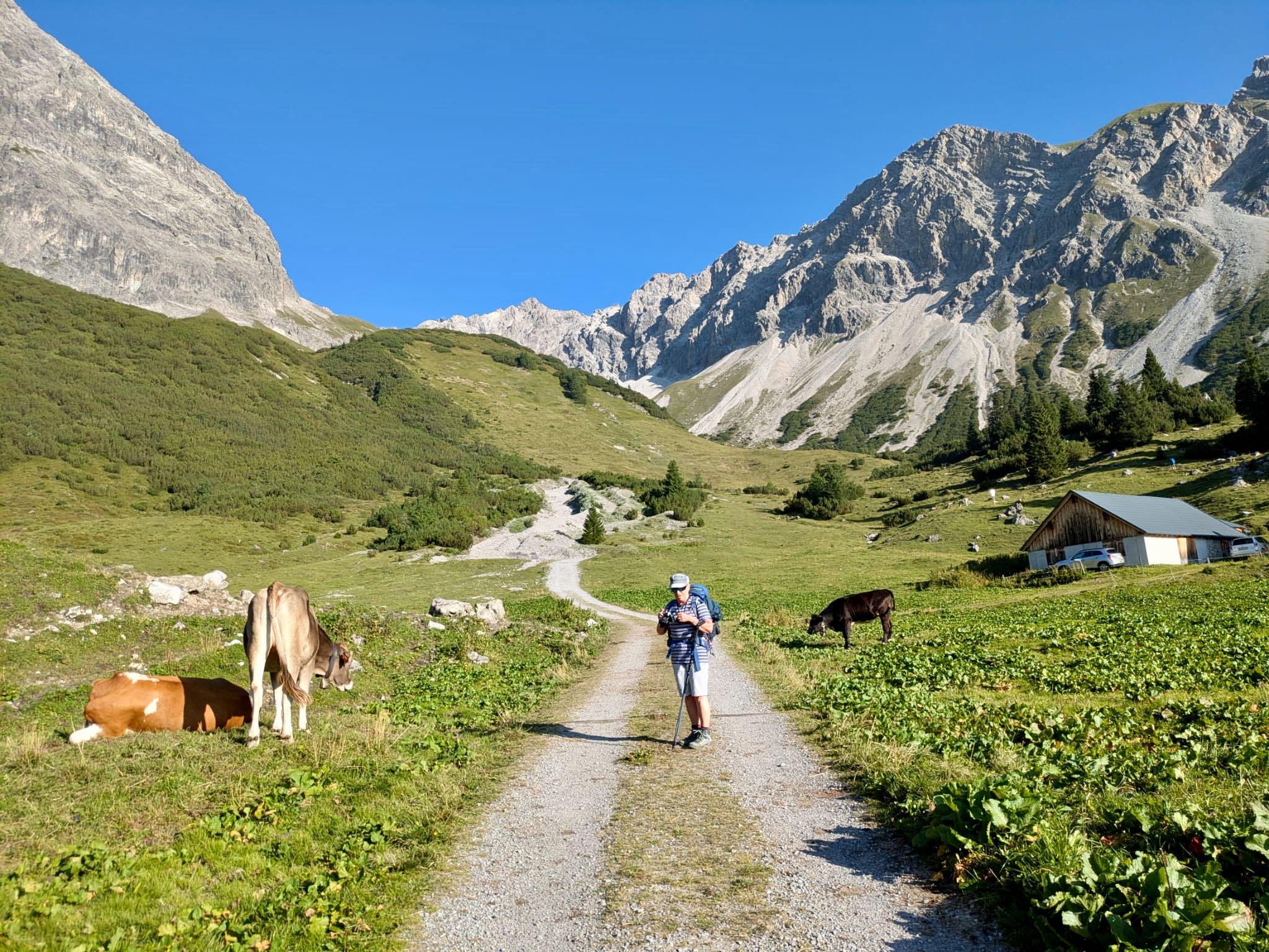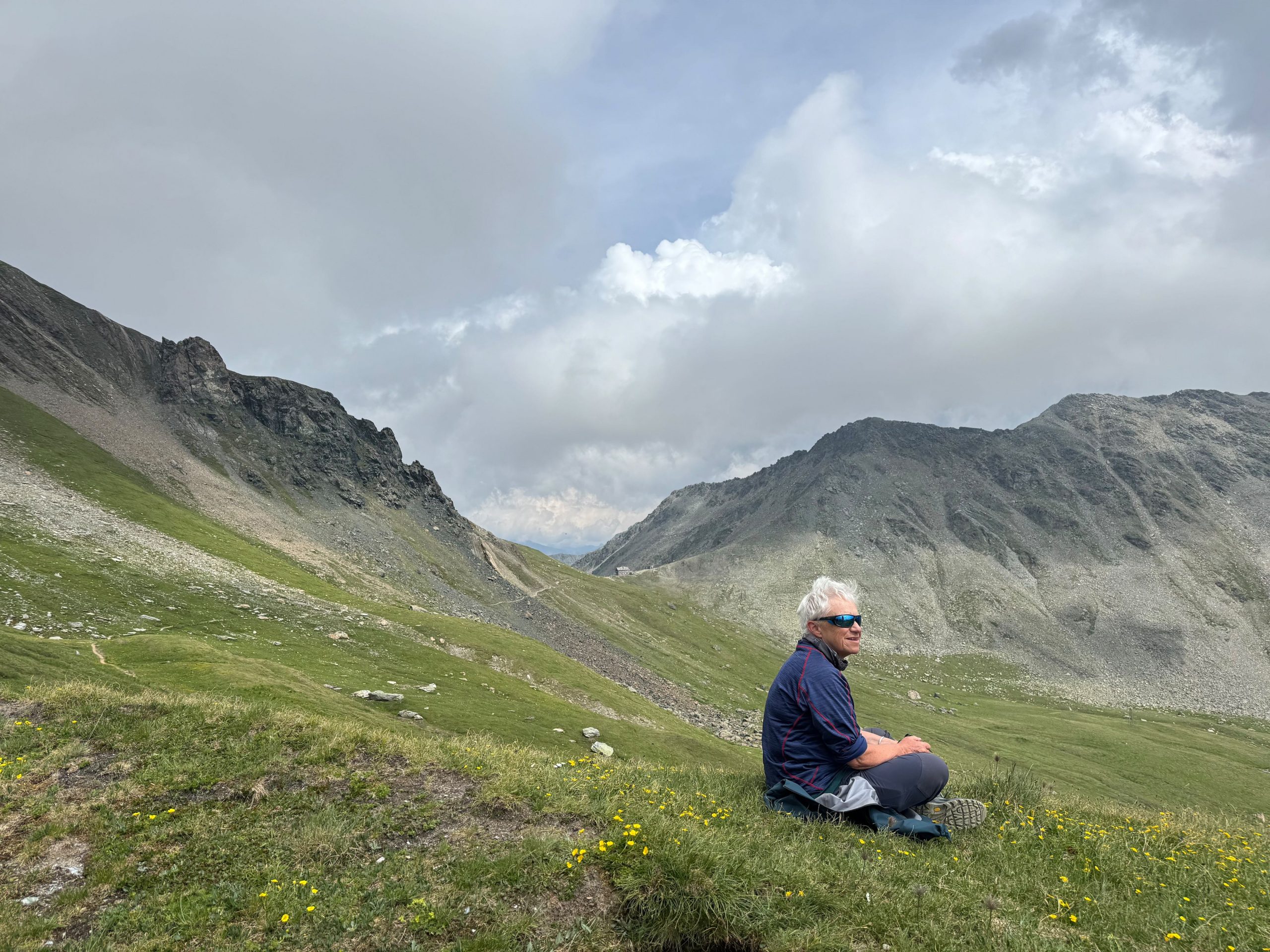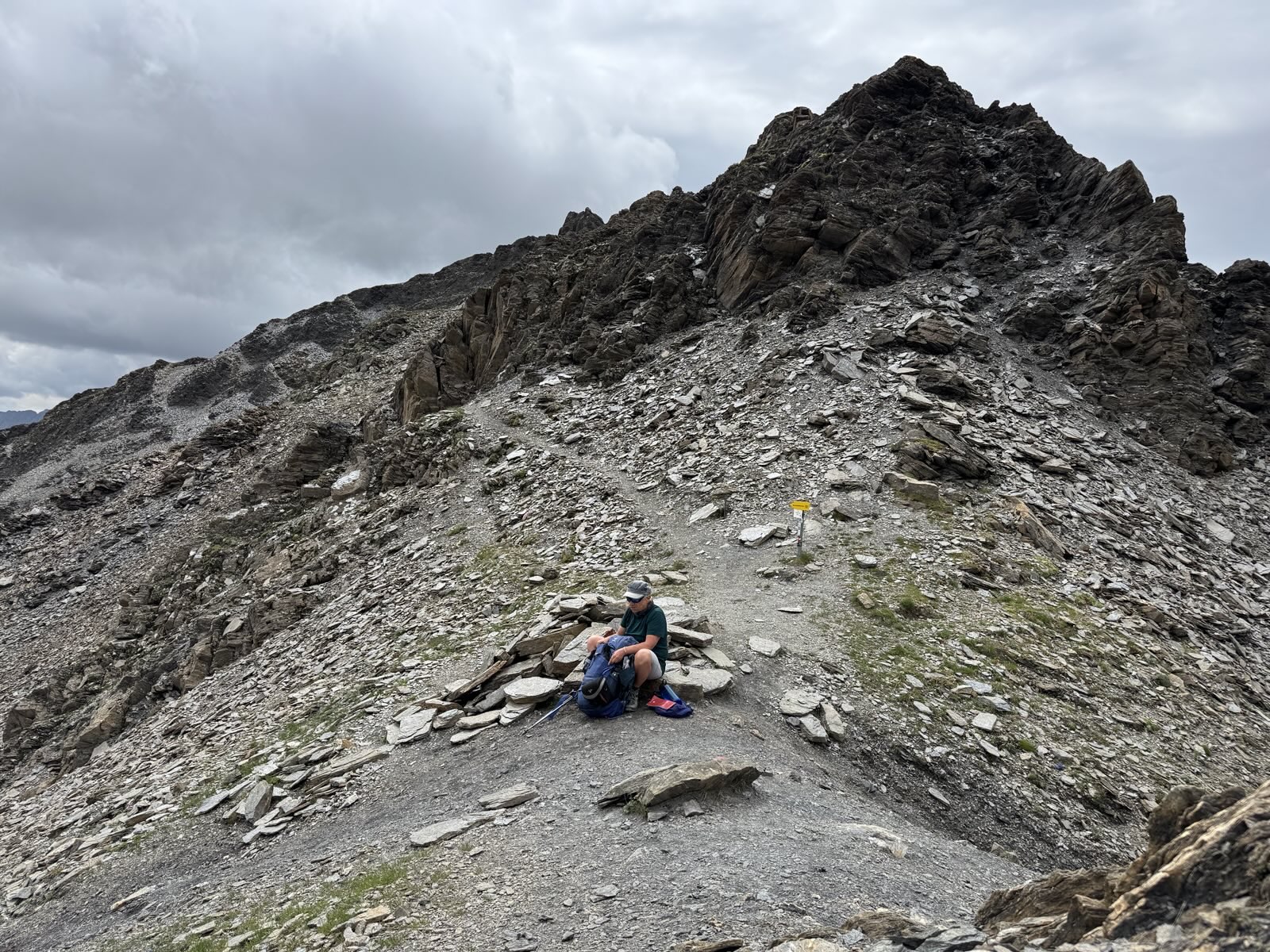Hiking Summer 2025 – After the Trips
24. September 2025

5 hut-to-hut-trips in the Alps
2 alone, 3 with friends
3 in Austria, 1 in France, 1 in Slovenia
several altitude meters and kilometer
2-bed-rooms and many dormitoriy-beds
crisp bread, delicatesspaste, salted nuts, müsli and nescafé
4 Tours with changes, 1 Tour without
3 days with rain
2 lost caps
3 x blue 2 x violett backpack
3 x fear of height
1 x squatting toilet outside
1 x hot shower
and lots to think about.
 1
1
I’ve done small and larger hut tours now and then (1998 GTA, 2022 Panorama Trail Southern Alps), but I had the feeling I’d spent much more time in the eastern ranges than in the mountains right outside my own front door. And that was exactly what I wanted to change this summer. I had a bit of money in my pocket, flexible time, and was really looking forward to some great mountain experiences.
Reality left me feeling a bit more sobered.
The Alps are magnificent—or rather, they could be magnificent. What bothers me is that there’s never really a sense of untouched wilderness. There are always roads nearby, villages larger than just a handful of houses on a slope, cable cars, and lots of people. In some regions, this had already bothered me before (for example, in the Kaiser Mountains), while in others I hadn’t been so aware of it. I was seeking solitude in the mountains—and instead found crowds. This was partly because the Alps have always been fairly built-up with roads and settlements, but also because the mountains have steadily, and especially in recent years, become ever more popular. Back then, it was always important to me that more people should experience the mountains. Now, it feels to me as if there are perhaps too many.
.
 2
2
There are developments in the mountains that probably encourage this. Marketing efforts, gear hype, the whole outdoor lifestyle buzz—and at the same time, ever-growing convenience and comfort in the accommodations. Now people can go who can’t imagine surviving without a daily hot shower. Now people can go who want to escape annoying snorers and tuck themselves away in private rooms. Now people can go who can skip tougher sections and lots of elevation gain by taking a cable car. Now people can go who don’t want to carry their own food from home. All those people were out there now—the very ones I once wished would discover the mountains. No, it wasn’t only them. It was simply many, many more.
.
Back then, only wealthier people could afford to stroll through the mountains for fun—the others had to work there or simply couldn’t afford it. With the huts and the alpine clubs, it was supposed to become more affordable for many people, and it seemed to me that twenty years ago you met more “equals”. This year, I had the feeling I was back in a more elitist crowd. The mountains—despite the clubs—have become expensive. The huts have to cover regulations, investments, and rising costs. They can’t make it work if guests only take the bare minimum. So they push with bigger consumption offers. Some more, some less. And there are plenty of people who can—and want to—afford it just like that. Then I sometimes sit next to them and feel poor. On the one hand. On the other hand, I don’t actually want it any different—I want it to stay spartan. So that life in the huts feels more distinct from my everyday life. So that I appreciate more what I’ve gone without. And so that I feel more connected to nature. Through the huts and the nearby civilization, I’m not really “in” nature anyway, but I’ve found a kind of balance that feels right to me. Only, on that balance beam, I feel a bit alone. As if so many others have chosen a different one.
 3
3
With all these people, the need for profitability, the desire for planning security, and everything else—the hut reservations are often stormed like crazy, and it becomes really difficult if you:
- look for something more spontanous
- want to change your plans along the way (because your body, the weather, or other circumstances don’t turn out as expected)
- prefer to move forward according to the feel-good principle
- appreciate the freedom of not-planning
In the past, a sleeping spot in the huts was guaranteed. Today, they’re allowed to turn you away if you’re not in serious need. I used to like that element of uncertainty. But I also understand that these crowds have to be managed differently now, and that huts need to plan and calculate more like businesses. Still, I mourn the earlier times a little.
My very first proper hut tour—apart from a few youth hostel trips—was the Overland Track in Tasmania. You carried everything yourself, laid your 1–2 mm sleeping mat on hard wooden boards, cooked on firewood, and were in the wilderness. The next tour, in Corsica, offered self-catering huts with thicker foam mattresses and gas stoves. And then I was floored when I first stayed in an Alpine Club hut: bottled drinks, a cooked dinner, a toilet inside the building—I actually found the luxury off-putting. But then I got used to it being the way it is. For a while, I was more often in Asia. I felt a bit ashamed about always chasing my mountain happiness so far away, while neglecting what was right on my doorstep. But after this summer I have to say: I’d rather head off into the distance again.
 4
4
Still, I don’t want to miss this summer at all. There were many lovely mountain moments. It was wonderful to spend (mountain) time with friends. I could listen to interesting podcasts and let motivational music carry me upward. There were new experiences and encounters. My heart even leapt with joy at times. I love the differences between regions, the various scents, languages, plants, stones. This summer enriched my life, and now I definitely know more than I did before
